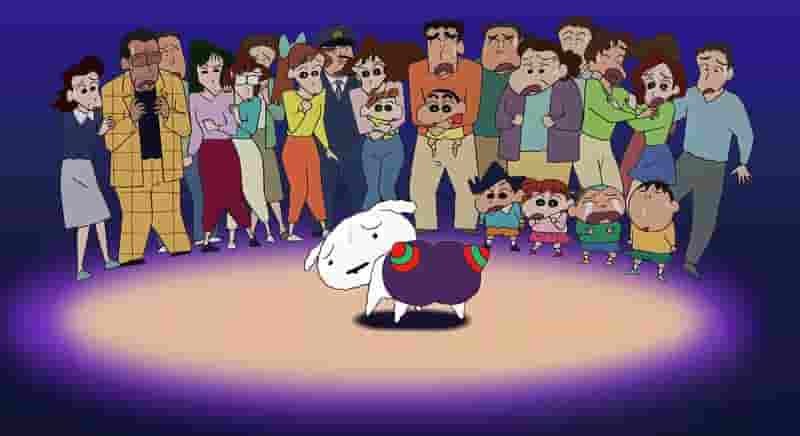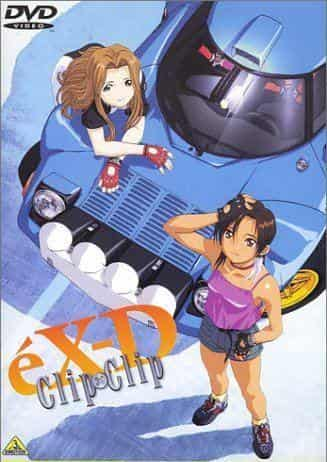Boy Ninja Fujimaru of the Wind - Exploring the appeal of good old ninja anime and its relevance to modern times

"Boy Ninja Fujimaru of the Wind": Adventure and the world of ninjutsu in the Sengoku period■ Public MediaTV anime series ■ Original Mediacomics ■ Broadcast periodJune 7, 1964 - August 31, 1965 Every Sunday 18:30-19:00 *Episodes 32-65 (final episode) will be changed to every Tuesday 19:30-20:00. ■Broadcasting stationNET ■Frequencieshalf an hour ■ Number of EpisodesEpisode 65 ■Original StorySanpei Shirato ■ ProductionToei Animation ■Works©Toei Animation ■ StoryIt's the Sengoku period. A fierce battle is taking place over the "Book of Dragon Smoke," which describes how to create a secret weapon that is said to determine the fate of the country. Fujimaru, who was raised as the son of a Fuuma ninja, is caught up in the battle and must fight against a group of ninjas who use various ninjutsu techniques and monsters who wield strange magic. The world of adventure and ninjutsu that evokes the rough winds of the Sengoku period is a story that draws viewers in. ■ExplanationThis ninja anime is an adaptation of the original Ninja Senpu manga by Sanpei Shiroto, who is a specialist in ninja manga, into an action-packed adventure for children. Although it is a black-and-white work, the first few episodes were aired in color, and a three-minute ninjutsu commentary section was included at the end of the main story, which was a novel attempt at the time. This anime depicts the exploits of ninjas in the Warring States period while aiming to convey the appeal of ninjutsu to children. The ninjutsu commentary section in particular is a device to help viewers understand the depth of ninjutsu, and also contains educational elements. ■Cast・Fujimaru of the Wind/Kiyoshi Komiyama・Tasuke/Kazuko Yoshikawa・Choro/Kayoko Yamamoto・Midori/Midori Kato・Ponkichi/Makiko Ito ■ Main staff Original story: Rin Okitani, Soji Fukuhara ■ Main Characters・Fujimaru the Wind A talented young ninja. He was kidnapped by an eagle as a baby, and was picked up by the village of Fuuma and raised as a ninja. However, he found out that his adoptive parents were actually villains, and became a deserter. Fujimaru's growth and fighting style are inspirational and inspiring to viewers. ■Subtitle Episode 1: Fujimaru arrives Episode 2: Duel at Okamigahara ■ Related works *Three TV blow-up versions were screened at the film festival "Manga Daikoushin" (the predecessor to "Toei Manga Matsuri"). ■ Review"Boy Ninja Fujimaru of the Wind" is a work that depicts the exploits of ninjas in the Warring States period, and is an anime that aims to convey the charm of ninjutsu to children in particular. Based on the original work "Ninja Senpu" by Sanpei Shirato, this work has been adapted as an adventure drama for children, and is characterized by a story and characters that inspire and encourage the viewer. The story centers around the battle for the "Book of Dragon Smoke," and depicts the world of adventure and ninjutsu that evokes the rough and tumble of the Warring States period. The protagonist, Fujimaru the Wind, is an excellent young ninja raised in the village of Fuuma, and his growth and fighting style will leave a deep impression on viewers. In particular, the development in which he finds out that his foster parents were villains and becomes a deserter will leave a strong impression on viewers. Also important are Fujimaru's friends Tasuke, Choro, Ponkichi, and the peace-loving girl Midori. Their fighting side by side and overcoming difficulties are symbols of friendship and deeply move viewers. Midori's presence in particular will teach us the importance of not forgetting hope and peace even in the midst of battle. Although this anime was originally produced in black and white, the first few episodes were aired in color, and a three-minute explanation section on ninjutsu was included at the end of the episode, which was a novel attempt at the time. The explanation section was a device to help viewers understand the depth of ninjutsu, and also contained an educational element. This allows children to learn not only about the appeal of ninjutsu, but also about its background and history. In addition, three TV blow-up versions of this work were shown in the movie "Manga Daikoushin". These movies allow viewers to enjoy the charm of the TV series on a big screen, and will give viewers a new impression. In particular, "Boy Ninja-style Fujimaru: The Mysterious Arab Doll", "Boy Ninja-style Fujimaru: The Phantom Magic Troupe", and "Boy Ninja-style Fujimaru: Defeating the Great Ape" are must-see works for fans, as they allow you to enjoy the story from a different perspective than the TV series. ■Recommendation"Boy Ninja Fujimaru of the Wind" is a work that depicts the exploits of ninjas in the Sengoku period, and is an anime that aims to convey the charm of ninjutsu, especially to children. It features a story and characters that inspire and encourage the viewer, and also has a ninjutsu explanation corner to help viewers understand the depth of ninjutsu. This will allow children to learn not only about the charm of ninjutsu, but also its background and history. In addition, three TV blow-up versions were screened at the movie "Manga Daikoushin," so you can enjoy the story from a different perspective than the TV series. It is a must-see for fans, and is especially recommended for those interested in ninjas and the history of the Sengoku period. |
<<: Astro Boy's Space Adventure: A Heroic Tale and Its Evaluation
Recommend
Sasami-san@Ganbaranai: A review and recommendation of a heartwarming anime depicting the daily life of a soothing heroine
"Sasami-san@Ganbaranai": A soothing ani...
Take Me to the Bathhouse: A review that delves deeper into the appeal of Minna no Uta
"Take Me to the Bathhouse" - A heartwar...
A thorough analysis of the emotion and excitement of "NARUTO Shippuden the Movie: The Will of Fire"!
"NARUTO Shippuden the Movie: The Will of Fir...
New trailer for "True Evolution Fruit" confirms that it will premiere in January 2023
The official TV animation of "The Fruit of E...
Chen Kun's film "Onmyoji" is finished and will be released in 2020
The movie "Onmyoji", adapted from the p...
"Super Mario Bros. Movie" will be released on B-Battle date to be determined
Today (June 28), according to the B station page,...
The appeal and evaluation of "Sleeping Beauty": A fusion of deep story and beautiful visuals
"Sleeping Beauty or Sleeping Beauty" - ...
The new poster of the movie "Jiang Ziya" was released and the cast of characters will be announced tonight
Recently, the official release of the movie "...
The new version of the highly acclaimed animated film "In This Corner of the World" has been postponed to next year
The dark horse animated film "In This Corner...
"Nameless Lake": Reevaluating the moving song of the people
The charm and evaluation of the nameless lake - N...
The appeal and reviews of "Free!": Exploring the deep world of swimming anime
The appeal and depth of "Free!": The hi...
The appeal and evaluation of the second series of Welcome to Demon School! Iruma-kun
The appeal and evaluation of the second series of...
Gensomaden Saiyuki - A deep review of the fascinating story and characters
A comprehensive review and recommendation of Gens...
Good Smile launches a Crayon Shin-chan clay doll that can show its buttocks, priced at about 330 yuan
Good Smile Company, a famous Japanese figure fact...
New stills from Hideo Nakata's new film "The Forest Where "It" Is" will be released on September 30
Another new-age horror film "The Forest Wher...









